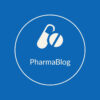Corrective and preventative action (CAPA) in pharma refers to the process of identifying, investigating, and addressing any issues or deviations that may have occurred during the production of pharmaceutical products. The goal of CAPA is to prevent the recurrence of such issues and ensure that the products are of high quality and meet regulatory requirements.
CAPA can include a range of activities, such as:
1. Identifying and investigating deviations: This involves determining the root cause of any issues that may have occurred during the production process, such as equipment failures, human errors, or supplier issues.
2. Implementing corrective actions: Once the root cause has been identified, corrective actions are implemented to address the issue and prevent it from happening again. This may include repairing or replacing equipment, re-training personnel, or revising procedures.
3. Implementing preventative actions: In addition to corrective actions, preventative actions are implemented to prevent similar issues from occurring in the future. This may include implementing new procedures, conducting additional training, or installing new equipment.
4. Monitoring and evaluating the effectiveness of CAPA: It is important to regularly monitor and evaluate the effectiveness of CAPA to ensure that it is working as intended and that the issues have been resolved. This may involve tracking key performance indicators (KPIs), conducting audits, or holding review meetings.
By implementing CAPA, pharmaceutical companies can help ensure that their products are of high quality and meet regulatory requirements, ultimately protecting the health and safety of patients.
In other words,
Corrective action involves identifying and rectifying any existing problems or non-conformances. It’s a reactive approach, aimed at resolving issues that have already occurred. For example, if a batch of medication fails a quality test, corrective action would involve investigating the root cause and implementing measures to prevent a recurrence.
Preventive action, on the other hand, is all about being proactive. It focuses on identifying potential risks or areas of improvement before they turn into actual problems. By implementing preventive measures, such as process enhancements or training programs, the aim is to prevent issues from arising in the first place. This not only saves time and resources but also ensures consistent quality and safety.
To effectively implement corrective and preventive action, many organizations follow the CAPA framework. CAPA stands for Corrective Action and Preventive Action. It’s a systematic approach that involves several key steps. These include issue identification, root cause analysis, action planning, implementation, and verification. By following this structured process, organizations can ensure that actions taken are thorough and effective.
In the pharma industry, documentation is crucial. When it comes to corrective and preventive action, proper documentation serves multiple purposes. Firstly, it ensures traceability, allowing organizations to track the entire process from issue identification to resolution. Secondly, it aids in compliance. Regulatory bodies often require detailed documentation of any actions taken, and having a robust system in place is essential for audits and inspections.
Corrective and preventive action is not a one-time activity. It’s an ongoing process, with the aim of continuous improvement. By analyzing data, monitoring trends, and conducting regular reviews, organizations can identify recurring issues or areas for enhancement. This feedback loop ensures that the quality management system evolves and becomes more robust over time.
For SOP of Corrective and preventative action (CAPA) click : Corrective Action and Preventive Action (CAPA) SOP
